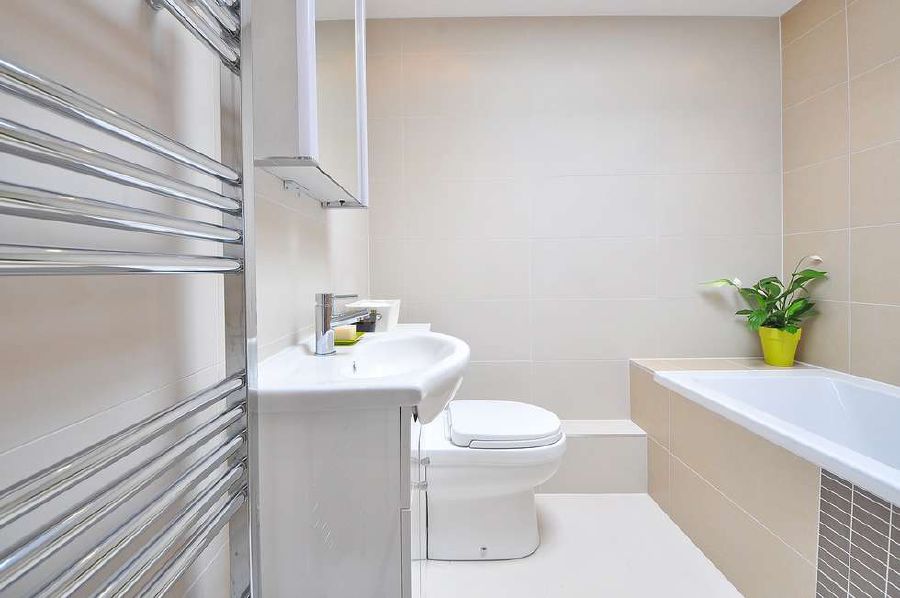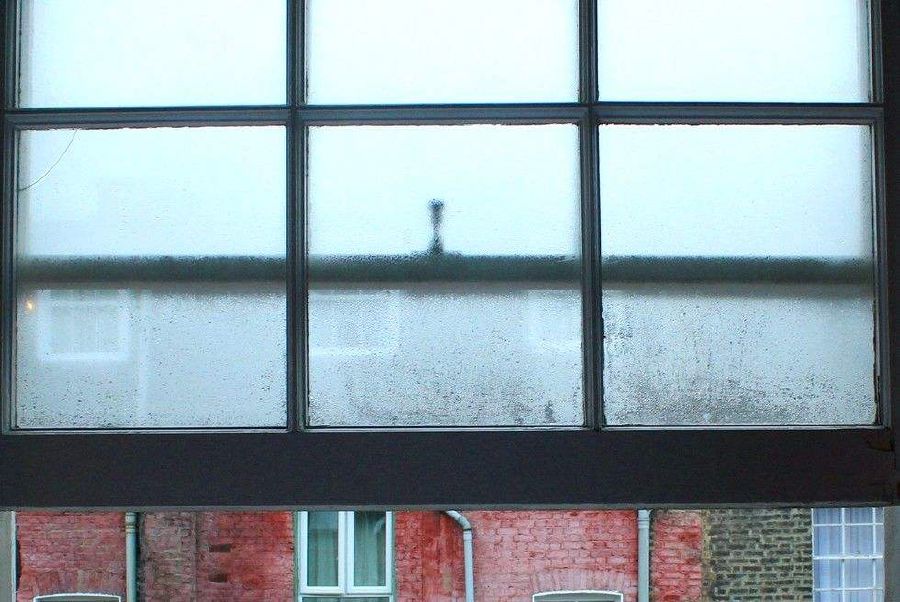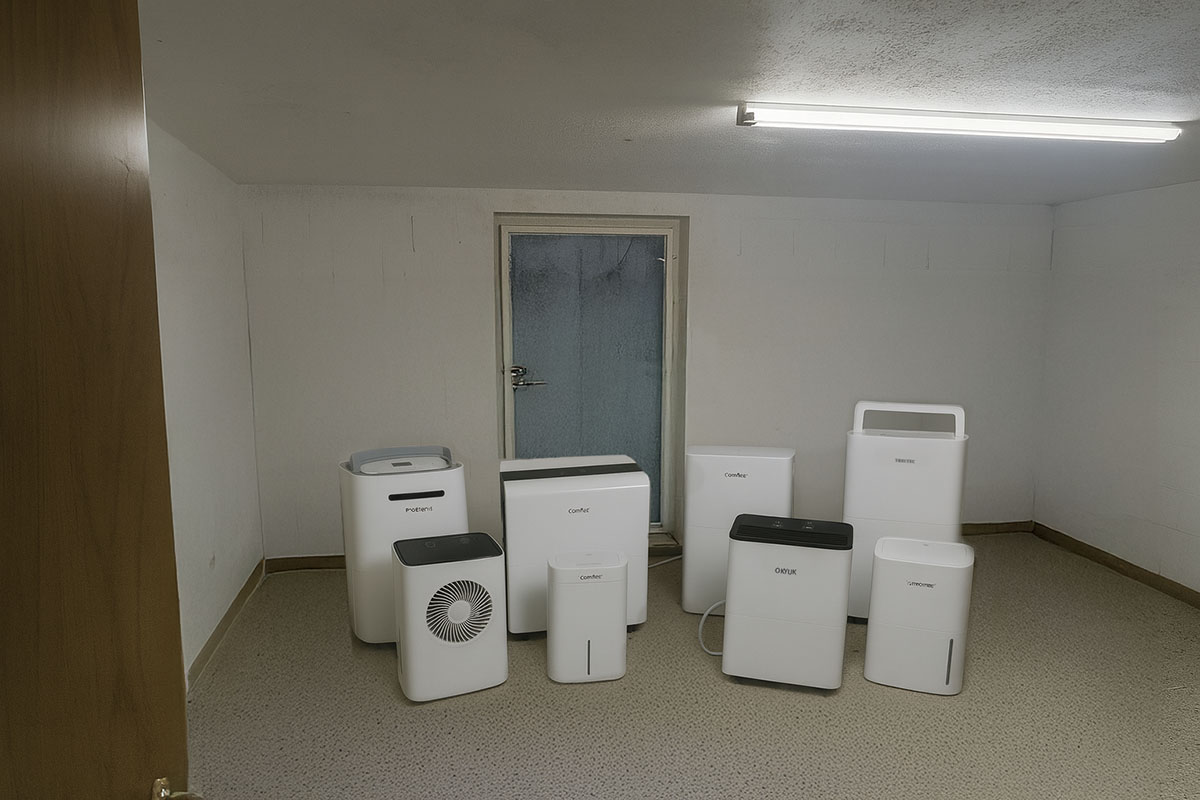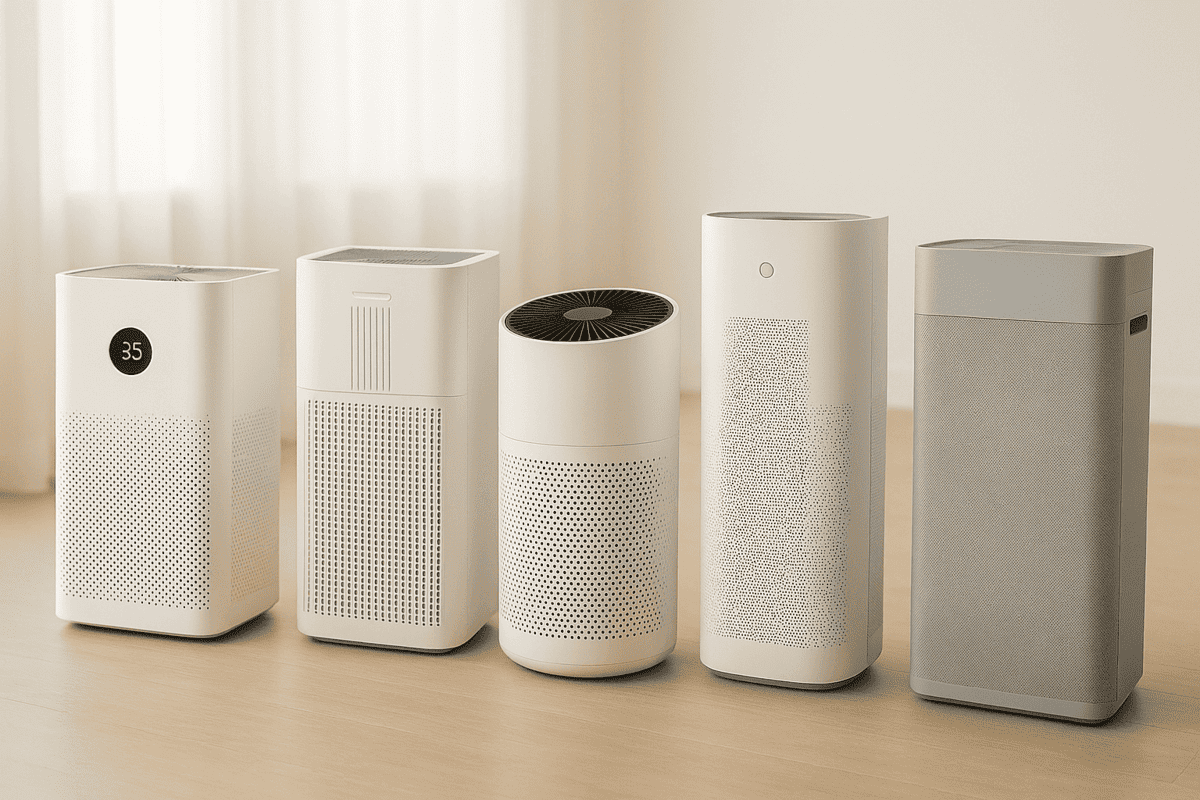Measure & control humidity in living spaces
The air around us feels different depending on the climate and ambient temperature. You have probably already heard the term "humidity". We have summarised exactly what it is and how it can be controlled below:
What is humidity?
Humidity defines the percentage of water vapour in the ambient air. Humidity is an important parameter for living organisms as well as for meteorological and technical processes. Many living organisms require a certain level of humidity in order to survive.
Humidity is important for us humans, especially in living spaces. This should not be too high or too low. Excessive humidity in particular promotes the formation of mould in the long term.
Humidity also depends on the temperature. The higher the temperature, the more water the air can bind. An appropriate living temperature therefore plays a decisive role and should always be monitored.
Reasons for high humidity
There are many reasons for excessive humidity in rooms. Firstly, it is generally dependent on the room and the activities carried out in it.
Showers
For example, the humidity in the bathroom can rise enormously during a shower. The water vapour from a hot shower causes the humidity in the room to rise quickly. You can recognise this by a steamy bathroom mirror, for example. In the bathroom, so-called bathroom fans can help to reduce the humidity in a controlled manner.

Bathroom fan
Overview of recommended bathroom fans: These bathroom fans are recommended.
It is also advisable to air the room after showering or bathing.
Cooking
Excessive humidity can also occur during cooking. Cooking causes water to evaporate, which then collects in the surrounding air. This makes the air increasingly humid.
Drying laundry
Drying laundry in the home can also result in increased humidity. The moisture in the laundry is gradually released into the environment. The ambient air absorbs it. The result is increased humidity.
Several persons
Even several people in a room can cause the humidity to rise. Every time you breathe out, air with a high level of humidity is exhaled, which mixes with the air in the room. This can lead to a rapid increase in humidity, especially if there are many people in small rooms.
Plants
Plants are often welcome in living spaces. Plants are also helpful for filtering CO2 from the air. However, they also favour a certain level of humidity. The water you use to water the plants ultimately ends up back in the room air.
Sporting activity
If sport is practised in a living room, the humidity can also increase. Sweating during exertion and the increased room temperature favour an increase in humidity. The smaller the room and the greater the physical exertion, the faster the humidity rises.
If you notice that the humidity in your living space is permanently too high, the use of dehumidifiers can help to create a better indoor climate in the long term.Reasons for low humidity
One cause of low humidity can be the generally dry weather. Another cause, which is probably more common in Germany, is dry heating air. This is because when the room air is heated quickly by switching on the heating, it can also bind more water. As a result, the relative humidity drops. Here is a simplified example:
If the room air is cold and can absorb a maximum of 20 litres of water, but has only bound 10 litres of water at this moment, then the relative humidity is 50%.
If the air is now heated, the maximum amount of water that can be absorbed increases. Let's assume that the air is heated to such an extent that it can bind 40 litres of water. For example, by switching on the heating. Then the relative humidity drops to 25%. This is because of the maximum 40 litres that the air could bind at this temperature, only 25% (10 litres) are contained in it.
The relative humidity indicates the percentage of water that is bound in the air. If the air can bind 10 litres at a certain temperature, but there is only 5 litres of water in it, then the relative humidity is 50%.Let's keep in mind: Very warm indoor air favours low humidity.
Measure humidity
To determine the humidity value, you can measure it with simple measuring instruments. So-called hygrometers are used to measure humidity.
With this digital thermo-hygrometer from ThermoPro, you can easily read both the current humidity and temperature. At 4 inches, the display is pleasantly large. If you wish, you can save the highest and lowest values of the last 24 hours on the device.
You are also shown whether the currently measured humidity is too dry, too humid or within the normal range. You can either stand the thermo-hygrometer upright or hang it on the wall. A magnetic holder is included in the scope of delivery.
You can set various things on the device itself: For example, you can change the backlight if you wish or choose between Fahrenheit and Celsius. According to the manufacturer, the accuracy of the humidity measurement is ±6%. The device is also relatively easy to use and install.
A disadvantage is that the device sometimes shows strong deviations in the measurement results compared to calibrated models. Furthermore, it is not possible to set the duration of the backlight individually.

This model is a digital thermo-hygrometer.
There is just one button to choose between Fahrenheit and Celsius. Operation is therefore extremely simple.
When displaying the humidity, there is a small smiley behind the percentage. This shows you how to categorise the current humidity.
You can hang the device up with a magnetic strip or simply put it down.
The display is rather small. So if you are looking for a device whose display you can also read easily from the other side of the room, then this one is rather unsuitable.
- Comfort display: Both the hygrometer and the thermometer have colour-coded comfort zones for a healthy indoor climate
- Indoor climate control: Simultaneous measurement and control of humidity and temperature for indoors, analogue humidity meter
- Quality: The thermo-hygrometer with metal ring is made entirely in Germany
- Living climate: Feel comfortable at home thanks to humidity and room temperature monitoring, optimum temperature: 18 - 22 °C; optimum humidity: 40 per cent 60 per cent
- Accuracy: Precise measuring device thanks to hair-synthetic hygrometer, calibration possible
This thermo-hygrometer from the manufacturer TFA Dostmann displays both the room temperature and the humidity in per cent. Using a corresponding colour scale, you can see exactly whether the humidity in your room is too dry or too humid.
This thermo-hygrometer is available in many colours. It has a compact design so that it can be placed discreetly in many places in the room.
You should first calibrate the device before commissioning. This will give you even more accurate values when measuring.
The display is classic analogue and the Batteries are included in the scope of delivery.
If absolutely accurate measurement results cannot be achieved, recalibration of the device is recommended, although this requires a little patience. In my opinion, the base of the air knife could be a little more stable.
Humidity in different rooms
It is usually the case that the humidity in the home varies in each room. This also depends on what is currently being done in the respective rooms:
In the Kitchen for example, the humidity will rise as soon as you start cooking.
In the Bathroom On the other hand, the humidity is high when showering or bathing.
In the Cellar humidity can rise if you dry your laundry there, for example. In the cellar in particular, humidity can rise if moisture penetrates the brickwork.
Humidity therefore generally varies from room to room and depends on many factors. If the humidity is particularly high, you will most likely notice this even without using a measuring device. This is because the air is then warm and oppressive. This is the case after showering or when cooking, for example.
How can you influence the humidity?
You should ensure good ventilation in living spaces. Shock ventilation is a good keyword here. You can use it to control the humidity in living spaces to a large extent.
Shock ventilation is particularly recommended if you have been cooking, showering or bathing for a long time, for example. Rooms in which laundry is dried should also be well ventilated. In the article about the Ventilating in winter the shock ventilation is also explained in more detail.
Devices such as a humidifier or a dehumidifier can be an alternative if you have persistent problems with air that is too humid or too dry.

Dehumidifier
Recommended dehumidifiers and the most important purchase criteria.





